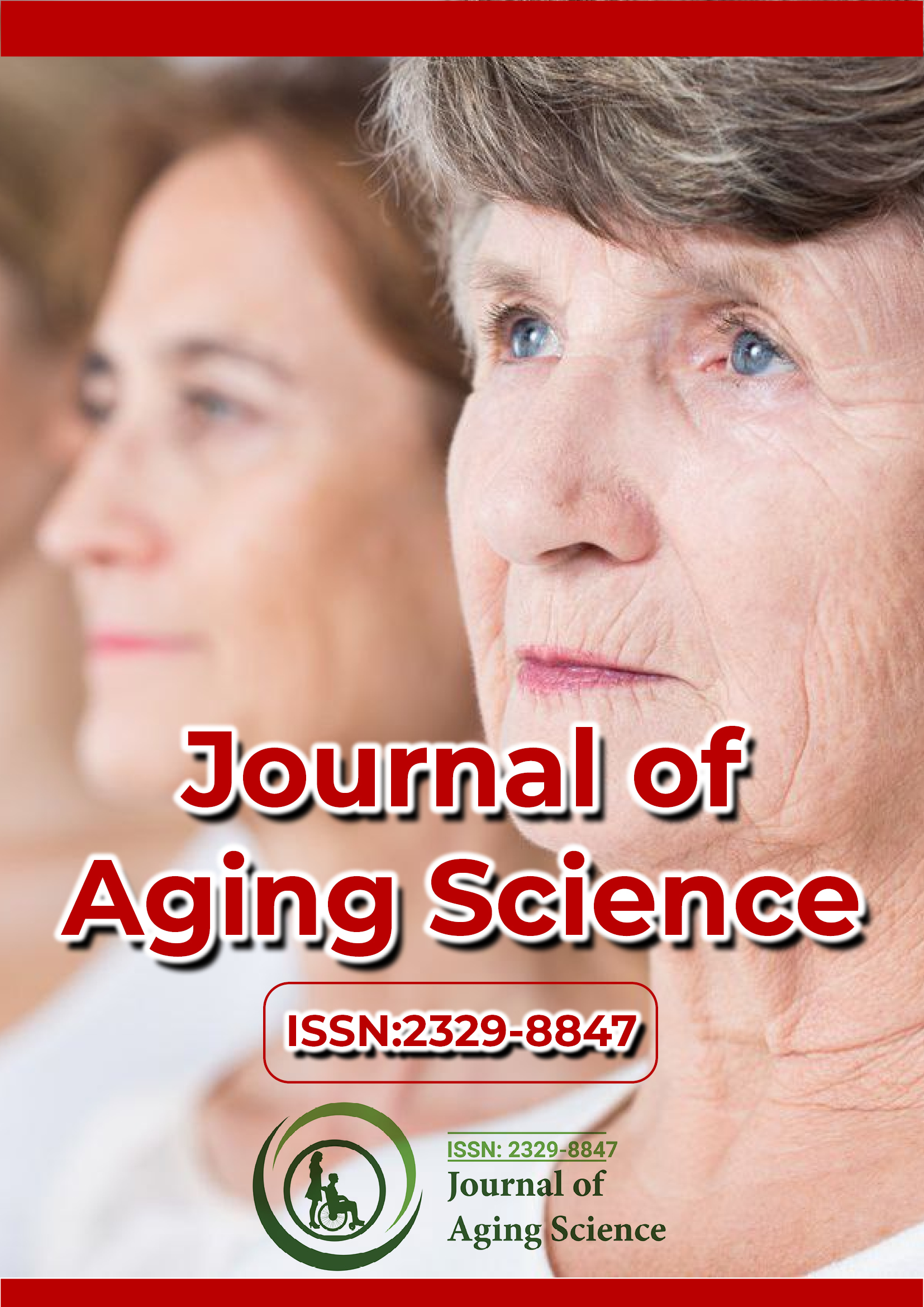Indexed In
- Open J Gate
- Academic Keys
- JournalTOCs
- ResearchBible
- RefSeek
- Hamdard University
- EBSCO A-Z
- OCLC- WorldCat
- Publons
- Geneva Foundation for Medical Education and Research
- Euro Pub
- Google Scholar
Useful Links
Share This Page
Journal Flyer

Open Access Journals
- Agri and Aquaculture
- Biochemistry
- Bioinformatics & Systems Biology
- Business & Management
- Chemistry
- Clinical Sciences
- Engineering
- Food & Nutrition
- General Science
- Genetics & Molecular Biology
- Immunology & Microbiology
- Medical Sciences
- Neuroscience & Psychology
- Nursing & Health Care
- Pharmaceutical Sciences
Articles published in Journal of Aging Science have been cited by esteemed scholars and scientists all around the world. Journal of Aging Science has got h-index 15, which means every article in Journal of Aging Science has got 15 average citations.
Following are the list of articles that have cited the articles published in Journal of Aging Science.
| 2024 | 2023 | 2022 | 2021 | 2020 | 2019 | 2018 | 2017 | 2016 | 2015 | 2014 | 2013 | |
|---|---|---|---|---|---|---|---|---|---|---|---|---|
Total published articles |
40 | 60 | 61 | 60 | 31 | 18 | 14 | 19 | 27 | 16 | 22 | 21 |
Research, Review articles and Editorials |
2 | 2 | 6 | 34 | 16 | 14 | 2 | 13 | 24 | 16 | 20 | 19 |
Research communications, Review communications, Editorial communications, Case reports and Commentary |
28 | 58 | 55 | 26 | 15 | 4 | 12 | 6 | 3 | 0 | 2 | 2 |
Conference proceedings |
0 | 0 | 0 | 21 | 0 | 0 | 41 | 0 | 41 | 0 | 0 | 0 |
Citations received as per Google Scholar, other indexing platforms and portals |
94 | 118 | 144 | 134 | 137 | 95 | 101 | 93 | 72 | 41 | 22 | 3 |
| Journal total citations count | 1061 |
| Journal impact factor | 1.04 |
| Journal 5 years impact factor | 1.89 |
| Journal cite score | 3.76 |
| Journal h-index | 15 |
Important citations
Foreign Language Usage and National and European Identification in the Netherlands
Foreign Language Usage and National and European Identification in the Netherlands
NEUROCOGNITIVE CHANGES IN CANCER PATIENTS AS A CURRENT CHALLENGE IN PSYCHO-ONCOLOGY /NEUROKOGNITIVNE PROMENE KOD ONKOLOSKIH PACIJENATA KAO AKTUELNI IZAZOV U PSIHOONKOLOGIJI.
Adapting to Obstacles: Inhibition and Creative Potential in a Sample of Successfully Aging Older Adults
Neurocognitive changes in cancer patients as a current challenge in psycho-oncology
Neurocognitive changes in cancer patients as a current challenge in psycho-oncology
Depression: A Scientific Approach
Open to Contact? Increased State Openness Can Lead to Greater Interest in Contact With Diverse Groups
Apolipoprotein E genotype impact on memory and attention in older persons: the moderating role of personality phenotype
Could cognitive estimation ability be a measure of cognitive reserve?
Executive functioning: A comprehensive Guide for clinical practice
The Oxford handbook of the five factor model
Fonction musculaire et performances fonctionnelles de la personne âgée
Development of VR-based intensively induced rehabilitation training system for children with cerebral palsy reflecting Delphi survey and patient survey and pilot test
Knowledge Discovery of Gamification Features Relevant to Immersive Virtual Reality Environments
Neurophysiological and kinematic correlates of improved motor-function in complex therapy movements in chronic stroke
Assessment of Right and Left Ventricular Function in Patients with Chronic Obstructive Pulmonary Disease and Their Co-Relation with the Severity of Disease
The use of immersive virtual reality in neurorehabilitation and its impact in neuroplasticity
Active and Passive Movement Rehabilitation Techniques for Mental Control in Stroke
Electrotactile Feedback for Sensory Restoration: Modelling and Application

